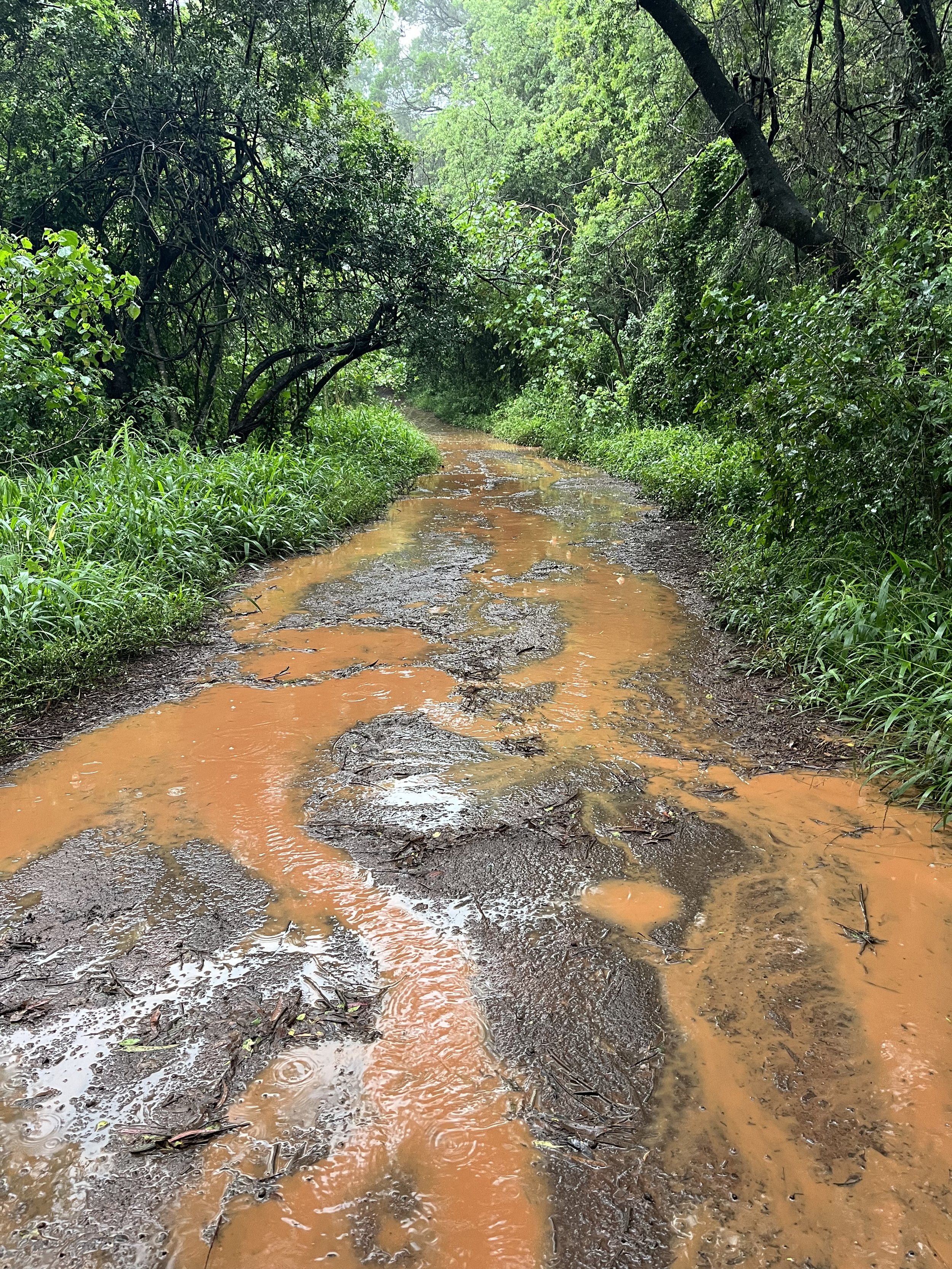Matatu Matata | Kenya
Karura Forest
After sleeping for about four hours, I woke up for an easy three-miler in the gentle rain, which allowed us to experience the vibrant red, muddy gravel roads of Karura Forest, with monkey-filled treetops, located in the affluent Nairobi neighborhoods of Nyari and Barton Estate. Much like my previous experiences in some African countries where hiking in parks is concerned, access to the park required a fee—600 KSH per person for non-citizens (about $5 USD), while locals paid 100 KSH. The necessity of maintaining the park was apparent, yet it struck me as potentially limiting accessibility for ordinary people, many of whom struggle to make a dollar a day. During my run in the park, we noticed only one other individual—a mzungu (Swahili for white person) with his dog.
The Bustling City of Nairobi
Karura Forest was a 30-minute Bolt (Kenya’s version of Uber) ride from the hotel. During the ride, I was struck by the energy of Nairobi on a Saturday. It was perplexing to witness the sheer volume of people commuting to work as early as 6 AM, utilizing various modes of transport for whatever hustling activities they had lined up for the day. Most people were either walking, crammed into matatus (shared minivans, famously known for carrying double their prescribed number of passengers), or riding motorbikes equipped with umbrellas. You hook a big umbrella to your motorbike, and off you go in the rain—No Matata (a play on Kenya’s famous Hakuna Matata—“No Problem”). But matatus are the real matata. They terrorize the roads. They seem to have their own rules. Everyone is scared of the matatu, yet everyone rides the matatu. And life moves on.
Matatu
In hindsight, I'm grateful I refrained from my customary practice in new countries—renting a car and exploring on my own. Navigating Nairobi's roads, particularly its daunting roundabouts, would have been a nightmare. On this rainy day, the roads were inundated with water due to poor drainage, as I later gleaned from a local newspaper. Nairobi, overall, bore a striking resemblance to any bustling American city, complete with familiar “family” establishments like McDonald's and Burger King. The distinguishing feature of Nairobi, though—besides the fact that Black African people are everywhere—is what Americans call “jaywalking.” People are everywhere. Walking, crossing, running—on the highway, on the streets. Cars competing for space with people, goats, and cows. Now, this is the kind of energy that gets me hyped for an early morning run with minimal sleep. A little danger in life never hurt anybody.
Driving in Nairobi
Nairobi embodies the quintessential African city—what you see is exactly what you see. Unlike in America, where your social class can determine whether you ever encounter a trailer park or public housing project, Africa doesn’t mask its blemishes, scars, pimples, or warts. Just take a 15-minute drive through and around the city, and you'll come face-to-face with a spectrum of realities: children on their way to school, often barefoot and wearing mismatched uniforms (which makes you wonder—what’s the point of school uniforms when nearly all Kenyan schools insist on them?); men and women walking, running, risking their lives to cross perilous highways in search of day labor (backbreaking work that pays less than $1 a day—if they’re lucky enough to find work at all); and street children persistently tapping on car windows at every traffic stop, begging for food or money.
And this—this is what makes me appreciate African cities. You get a reality check often, every day. You never get too cozy, pampered, or indulgent in illusions of I have made it. Because one moment, you might have made it, and the next, you haven’t. You keep your priorities straight. And you count your blessings. Every. Single. Day.



